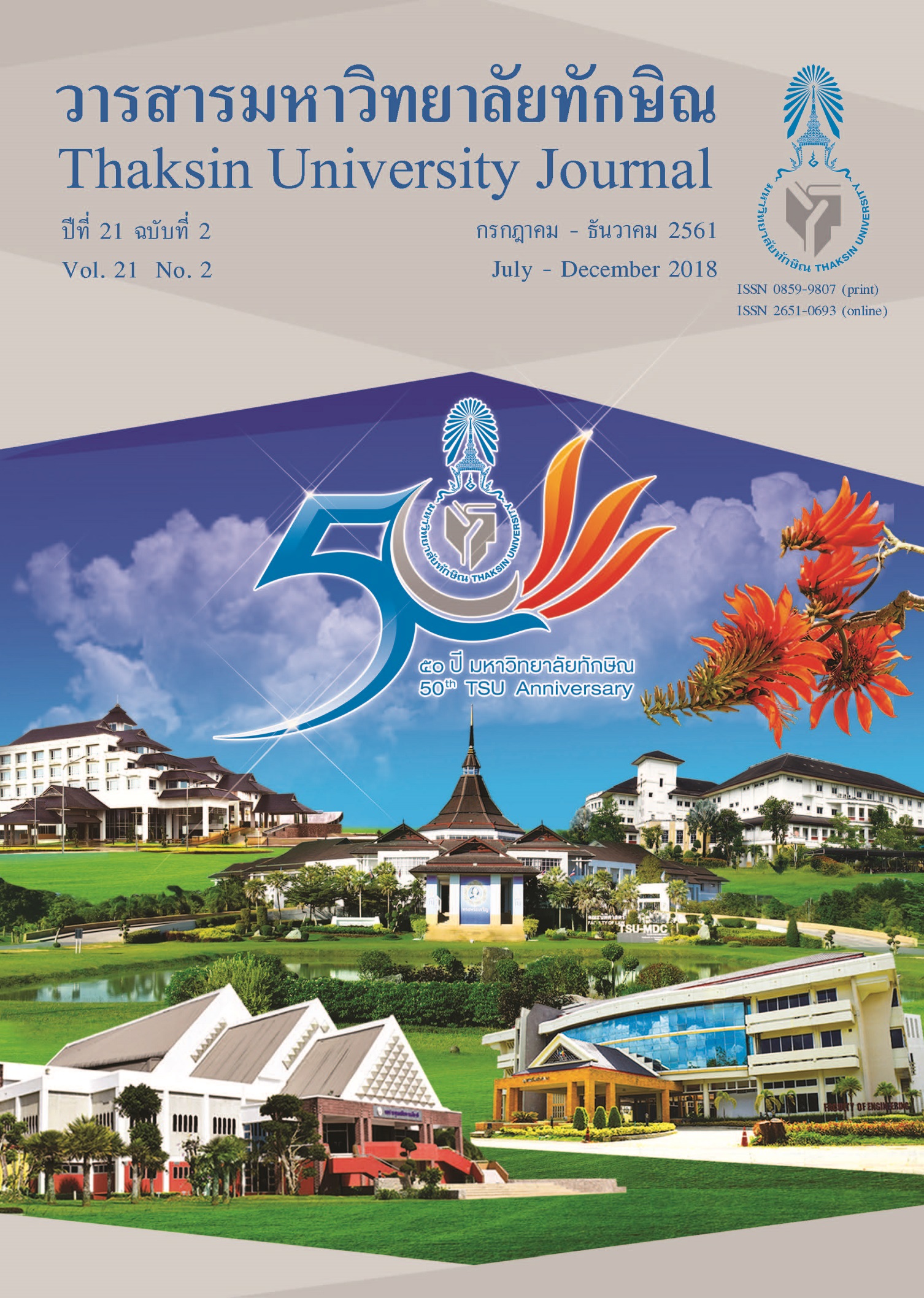Methylene Blue Adsorption onto Activated Charcoal Prepared from Mangosteen Peel
Main Article Content
Abstract
The activated carbon from mangosteen peel was used as an adsorbent for removal of methylene blue
from the solution in a batch adsorption system. The isotherms, kinetics and thermodynamics of methylene blue adsorption were examined. The Langmiur isotherm was better in describing the adsorption process. The kinetics adsorption was fit well with pseudo-second order model. The mechanism of process was shown that the film diffusion was a rate-determining factor in the adsorption process. The thermodynamics study revealed that a change in enthalpy was -14.63 kJ/mol illustrated the exothermic adsorption process. The Gibbs free energy was negative value, suggesting spontaneous of adsorption process.
Article Details

This work is licensed under a Creative Commons Attribution-NonCommercial-NoDerivatives 4.0 International License.
References
Tan, Y.L., Islam, M.A., Asif, M., and Hameed, B.H. (2014). Adsorption of carbon dioxide by sodium hydroxide-modified granular coconut shell activated carbon in a fixed bed. Energy. 77, 926-931.
Foo, K.Y., Lee, L.K., and Hameed, B.H. (2013). Preparation of activated carbon from sugarcane bagasse by microwave assisted activation for the remediation of semi-aerobic landfill leachate. Bioresource Technology. 134, 166-172.
Ghasemi, M., Zeinaly Khosroshahy, M., Bavand Abbasabadi, A., Ghasemi, N., Javadian, H., and Fattahi, M. (2015). Microwave-assisted functionalization of Rosa Canina-L fruits activated carbon with tetraethylenepentamine and its adsorption behavior toward Ni(II) in aqueous solution: Kinetic, equilibrium and thermodynamic studies. Powder Technology. 274, 362-371.
Liu, Q.-S., Zheng, T., Li, N., Wang, P., and Abulikemu, G. (2009). Modification of bamboo-based activated carbon using microwave radiation and its effects on the adsorption of methylene blue. Applied Surface Science. 256, 3309-3315.
Chotitham, L., Sumanatrakul, P., and Kongsune, P. (2016). Preparation Characterization and Application for Lead Adsorption of Dendrocalamus Asper Backer Bamboo Activated Carbon. Thaksin University Journal. 19(2), 43-52.
Hirata, M., Kawasaki, N., Nakamura, T., Matsumoto, K., Kabayama, M., Tamura, T., and Tanada, S. (2002). Adsorption of Dyes onto Carbonaceous Materials Produced from Coffee Grounds by Microwave Treatment. Journal of Colloid and Interface Science. 254, 17-22.
Nuithitikul, K., Srikhun, S., and Hirunpraditkoon, S. (2009). Influences of pyrolysis condition and acid treatment on properties of durian peel-based activated carbon. Bioresource Technology. 101, 426-429.
Kongnoo, A., Intharapat, P., Worathanakul, P., and Phalakornkule, C. (2016). Diethanolamine impregnated palm shell activated carbon for CO2 adsorption at elevated temperatures. Journal of Environmental Chemical Engineering. 4, 73-81.
Gokce, Y., and Aktas, Z. (2014). Nitric acid modification of activated carbon produced from waste tea and adsorption of methylene blue and phenol. Applied Surface Science. 313, 352-359.
Alabadi, A., Razzaque, S., Yang, Y., Chen, S., and Tan, B. (2015). Highly porous activated carbon materials from carbonized biomass with high CO2 capturing capacity. Chemical Engineering Journal. 281, 606-612.
Foo, K.Y., and Hameed, B.H. (2012). Factors affecting the carbon yield and adsorption capability of the mangosteen peel activated carbon prepared by microwave assisted K2CO3 activation. Chemical Engineering Journal. 180, 66-74.
Chen, Y., Huang, B., Huang, M., and Cai, B. (2011). On the preparation and characterization of activated carbon from mangosteen shell. Journal of the Taiwan Institute of Chemical Engineers. 42, 837-842.
Suttanan, R., and Piyamongkala, K. (2011). Kinetic and Thermodynamic Adsorption of Methylene Blue by Modified Rice Husk. The Journal of KMUTNB. 21, 337-348.
Langmuir, I. (1918). The adsorption of gasses on plane surfaces of glass, mica, and platinum. Journal of American Chemical Society. 40, 1361-1403.
Freundlich, H. (1906). Over the adsorption in solution. Zeitschrift für Physikalische Chemie. 57, 385-470.


